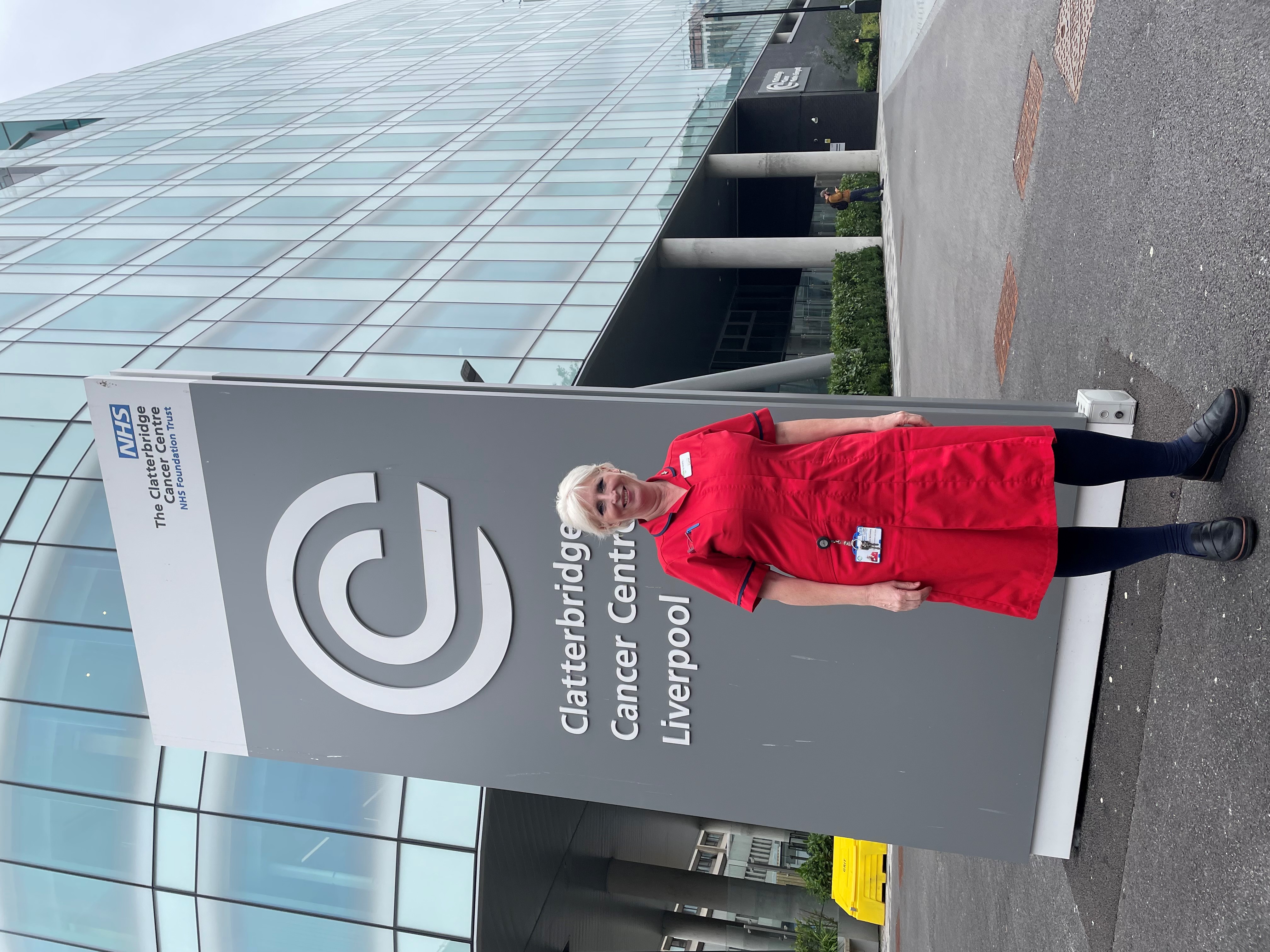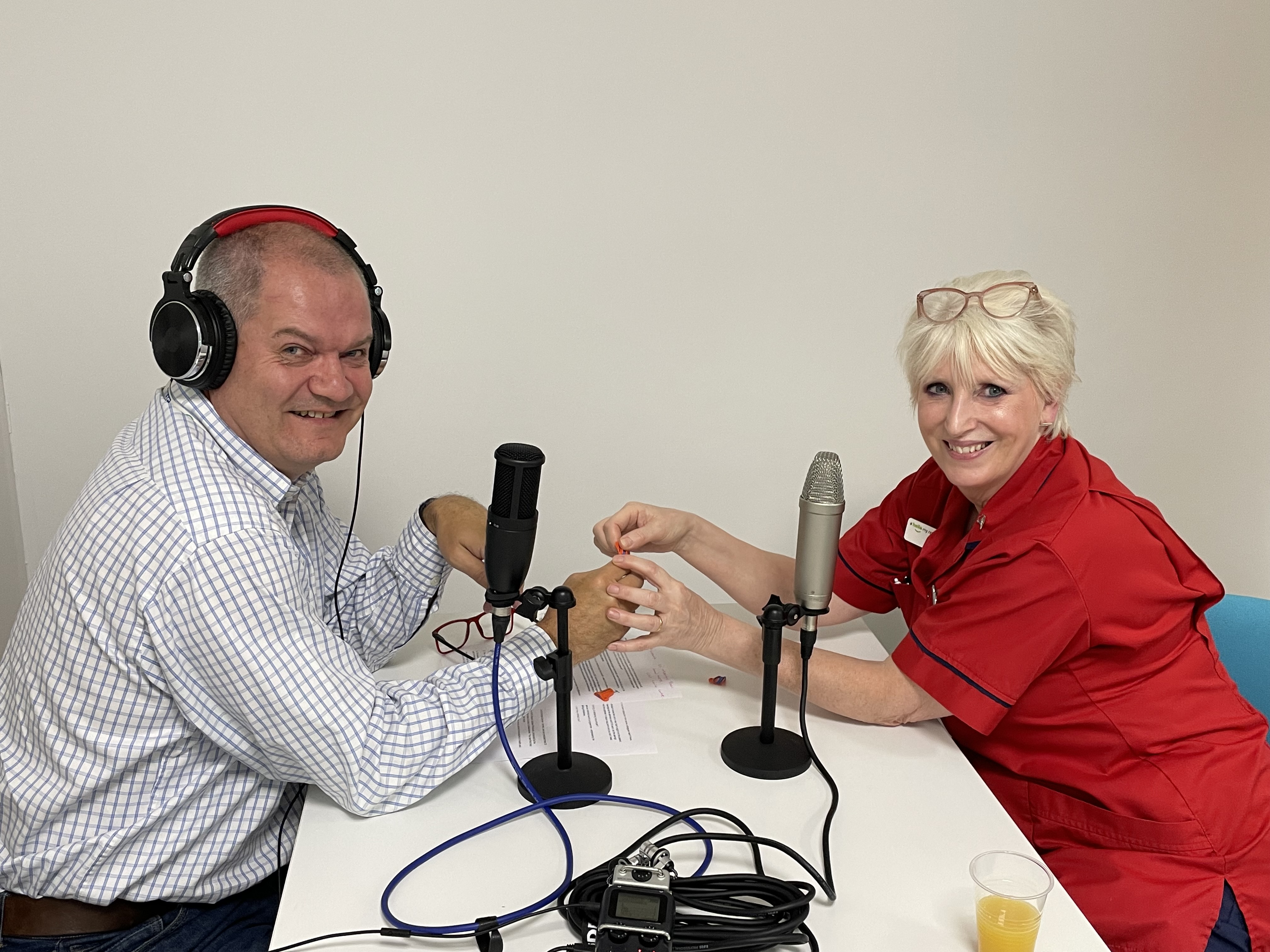Clatterbridge nurse is an early adopter of innovative medical device
Posted 3rd November 2021
 A medical device piloted at Clatterbridge is now being used in more than 100 NHS trusts across England – and the nurse who introduced it has been interviewed about the innovation.
A medical device piloted at Clatterbridge is now being used in more than 100 NHS trusts across England – and the nurse who introduced it has been interviewed about the innovation.
SecurAcath is a device that secures central venous catheters without requiring sutures or adhesives, which improves patient safety and experience. Clinical Interventions Lead Nurse Carol McCormick introduced SecurAcath at The Clatterbridge Cancer Centre in 2012, becoming one of the first practitioners in the UK to adopt it.
Carol, pictured, said: “When we first considered SecurAcath, we undertook a trial with 30 patients using the device for six weeks to test the reliability of the line staying in the same place. For a line to be optimal and in the safest position it needs to stay in place, as close to the heart as possible without it migrating out bit by bit.
“Immediately we found that the lines weren’t being pulled out or migrating. As it sits at the skin edge, and you know you aren’t going to pull the line out our nurses were able to clean 360° around the device, which contributed to the reduction of line infections.”
SecurAcath secures at the insertion site using small, flexible securement feet placed in the subcutaneous tissue below the dermis. This allows for improved site cleaning, minimises catheter movement and eliminates the risk of accidental dislodgment or migration during routine dressing changes.
One SecurAcath lasts the life of the line, lowering the total cost of patient care by removing the need for a weekly change of adhesive securement and reducing catheter complications. Annual savings across the NHS in England from using SecurAcath are estimated to be a minimum of £4.2 million based on data reviewed by the NICE Advisory Committee.
The device is being spread in trusts by the country’s 15 Academic Health Science Networks (AHSNs) through the Accelerated Access Collaborative’s Innovation and Technology Payment programme and is now supported through the Med Tech Funding Mandate.
Carol said: “The cost savings are quite noticeable and come from reducing the need to replace lines and no longer needing to double-dress the area. The reliability and the impact this has on patient care is the most important factor, which is why I’m such an advocate.”
Joseph Goldberger President and CEO of Interrad Medical, the company behind SecurAcath, said: “Carol contacted us soon after SecurAcath was first commercialised, having read a short article in the British Journal of Nursing. She, along with colleagues at three other centres, reached out to our website expressing an interest in evaluating SecurAcath.
“At the time, our focus was solely on commercialising the product in the US. However, I was travelling to the UK on holiday with my family and decided to visit the sites that had enquired. Today, those four sites serve as the pioneering reference centres for SecurAcath in the UK.
“As an innovator, Carol immediately recognised the value of the technology and the difference it could make for her patients and clinicians. Carol has been an unwavering supporter, providing insight to hospitals considering using SecurAcath for the first time.
“I’m extremely grateful to Carol for making that enquiry. Without key opinion leaders like her, SecurAcath would not be maintaining critical vascular access for children and adult patients all over the world.”
Carol has been interviewed about the device in the latest Health Innovation podcast, hosted by Dr Phil Jennings, pictured below, for the AHSN Network.
You can listen to it here.

